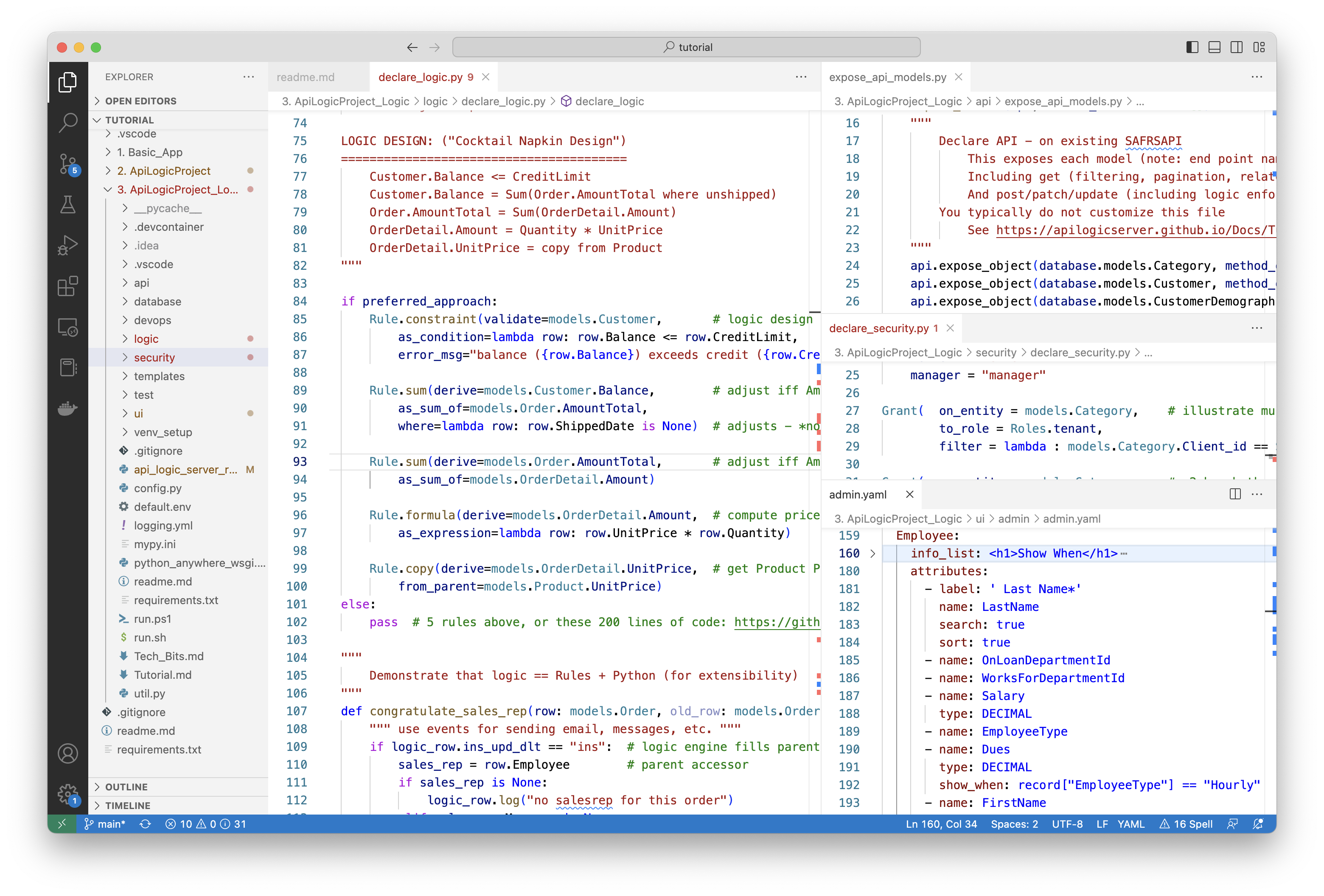Declarative Automation
While the most striking element of ApiLogicServer is automation - a running UI and API from a database - there are some important underlying aspects, described below.
Declarative Models
Observe that the key files for defining API, UI and Logic are not procedural code. They are declarative: specifications of what you want to happen, not how it's implemented:
-
Logic looks more like a specification than code
-
UI looks like a list of Objects and Attributes to display
-
API looks like a list of Objects
This is important because they are orders of magnitude shorter, and therefore far easier to understand, and to customize.
For example, consider the UI, defined by ui/admin/admin.yaml. This is in lieu of hundreds of lines of very complex HTML and JavaScript.

Customizable, Standard Dev Tools
ApiLogicServer makes provisions for you to add standard Python code for aspects of your project that are automated - custom end points, extensions to the data model, logic (rules plus Python).
Using Python for both declarative models and customization presents a uniform, predictable environment for developers. It enables their use of preferred tools - IDE, code editor with code completion, debugging, source code management, etc.
Includes Backend Logic - Rules
As noted above, multi-table constraints and derivations can constitute nearly half the effort in transactional systems.
Unlike most systems that address such logic with "your code goes here", ApiLogicServer provides declarative spreadsheet-like rules, customizable with Python, as described here. Rules are 40X more concise than code.
Rule execution is via a transaction logic engine, a complementary technology to traditional RETE engines. The transaction logic engine is specifically designed to optimize integrity and performance for transactional logic, which is not possible in RETE engines. See here for more information on their operation.